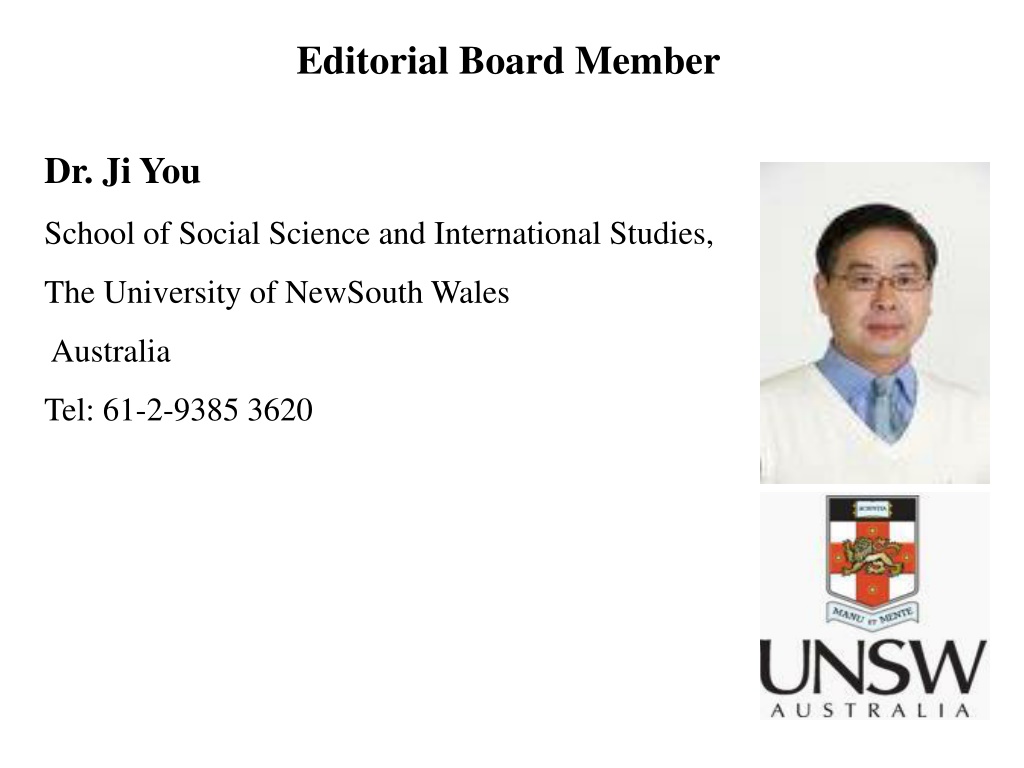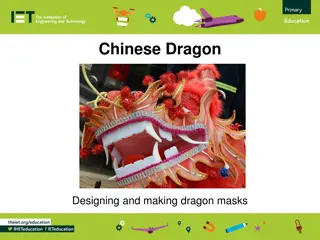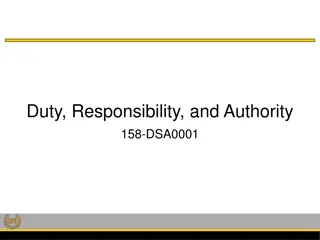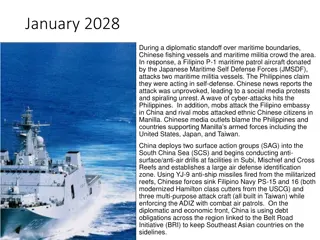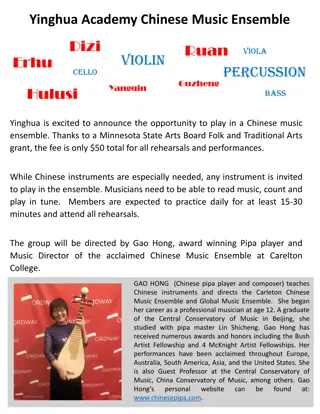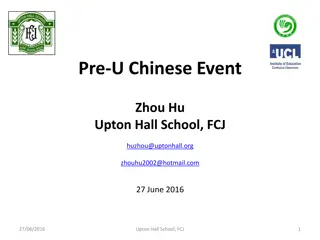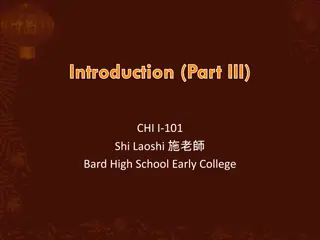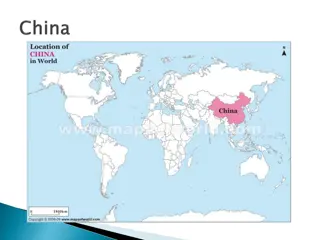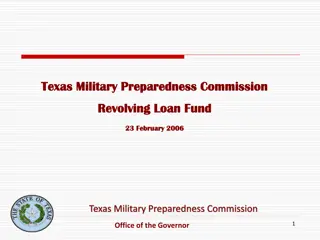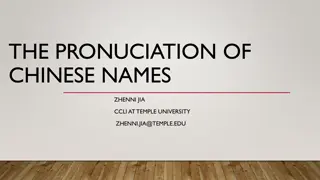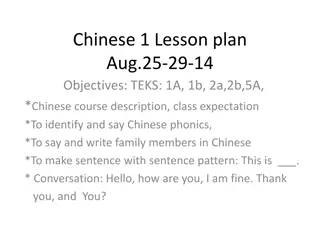Dr. Ji You: Expert in Chinese Military Transformation
Dr. Ji You is a respected scholar in political science and international relations, serving at the University of New South Wales and the National University of Singapore. He has authored books and numerous articles on China's military, focusing on its modernization and global power shift under Xi Jinping's leadership.
Download Presentation

Please find below an Image/Link to download the presentation.
The content on the website is provided AS IS for your information and personal use only. It may not be sold, licensed, or shared on other websites without obtaining consent from the author. Download presentation by click this link. If you encounter any issues during the download, it is possible that the publisher has removed the file from their server.
E N D
Presentation Transcript
Editorial Board Member Dr. Ji You School of Social Science and International Studies, The University of NewSouth Wales Australia Tel: 61-2-9385 3620
Biography Dr You Ji is Reader at School of Social Science, the University of New South Wales and visiting senior research fellow at the East Asian Institute, National University of Singapore. He graduated from the Peking University and Australian National University. He is author of three books, including China s Enterprise Reform: Changing State/Society Relations after Mao; and the Armed Forces of China, and numerous articles. His papers appear in journals such as the Problem of Communism, the China Journal, the Pacific Review, Comparative Strategy, Asia Policy, Japanese Studies, Contemporary Southeast Asia, the Naval War College Review, Journal of Contemporary China, and Contemporary Security Policy. He is on the editorial board of the China Journal; Provincial China; East Asia Policy; Asian and Middle East Studies, Issue and Studies and Journal of Contemporary China. > > >
Research Interests Political Science and International relations > > >
Publications Ji You (2014) Rise of Chinese Military Might and Global Power Shift. Arts Social Sci J 5: e101
Rise of Chinese Military Might and Global Power Shift The Chinese military is undergoing rapid transformation simultaneously unfolding in three areas: changing civil-military relations embodied in new post-Deng patterns of PLA-CCP interaction; an organizational overhaul in terms of its personnel composition and structure; and force modernization driven by doctrinal innovation, capability enhancement and war game plans. These changes have been deepened and accelerated since Xi Jinping became commanderin- chief in November 2012 who ordered the PLA to concentrate all its effort to raise combat readiness in order to and win the next war
What is unique about PLA transformation in military terms is that it is not a normal process of modernization for hand-ware and software due upgrading due to technological progress at home and abroad. It is war driven, catering for particular external security threats, specific adversaries and anticipated combat modes and scenarios. Its practical objective in the short-to-medium run is to reduce absolute US military superiority vis- -vis China to one that is relative, which, by the calculus of Beijing s strategists, would make Washington balk at confronting the PLA directly in US regional intervention, e.g., to buttress Asian states in challenging China s territorial claims. This is in resonance with the post-Iraq syndrome.
To this end PLA transformation has to be capability-based reflected by accelerated generational upgrade of order of battle. The PLA is pursuing the goal in multiple ways but crucial to its realization is possession of MAD (mutually assured destruction) capabilities at both strategic and tactical levels. The former is ensured by a nuclear arsenal that is minimum but reliable for effective retaliatory strike. Minimum but reliable is measured by a number s game : when the PLA s five new strategic missile submarines all become operational in about a decade from now, they could launch 60 ICBMs, each with three war heads. Then the total number comes to 180 and surely generates MAD deterrence against any power.
The latter is informed by PLA star war designs. The PLA has acquired initial capability of space operations through either landbased ASAT assets or striking satellites in the earth orbit. They can hit the enemy s under-soft belly through knocking down a proportion of its military satellites so that US one-way battle-field transparency against the PLA would be weakened or denied in future wars. Any armed action in the outer-space would generate MAD outcome, i.e., through accumulated debris of destroyed space objects. Since no human casualties are caused, however, it is hoped that star war may or may not escalate into an all-out war. This tactical MAD capability is essential for the PLA to deter or frustrate US preemptive strikes against China s key homeland strategic targets. Such attack is a top scenario envisaged both by Pentagon s Air-Sea Battle (ASB) concept vis- -vis the PLA and by PLA criteria for space operations. Thus limited but effective tactical aerospace power is of strategic importance for PLA transformation. It provides the requisite technology for China s everenlarged arsenal of long-range precision munities against adversary s forward deployed bases and weapons systems, e.g., carrier battle groups in the West Pacific. Thus it constitutes an indispensable foundation for anti-access/area-denial (2A/AD) operation -- its asymmetric warfare against a more powerful adversary.
More generally, Chinese military transformation is ambitious with clearly designed roadmaps to guide the policy formulation and force modernization. Generally, it has been embodied in the following endeavors: Changing the PLA from a military of quantity to that of quality. Changing PLA posture from being defensive-offense (homeland defense) to one that is capable of offensive-defense (sustained operations of long range power projection). Changing PLA force structure from being army-centric to one that suits joint operations with the special Services, especially the PLA Air Force and the PLA Navy, playing a primary role in war preparation. Changing PLA command structure from being multiple-layered and vertically-distributed to one that is horizontally arranged with fewer layers of command, control and communication. Changing PLA force development from focusing on mechanization (latform-centric warfare) to on paralleling mechanization and informatization network-centric warfare). Changing the PLA s weapons R&D and equipment priority from high-tech hardware modernization to one that combines both platform upgrade and IT-software advancement for future network-centric warfare.
The list of changes can be much longer. Suffice to say that the PLA is taking a new look with transformation deepening day by day. To the PLA a proper force development strategy provides good guidance for force transformation but only capabilities can fill the gap between an overarching design embedded in the strategy and combat effectiveness/battle-field dominance assured by advanced weaponry. PLA reform is based on three decisive factors: a guiding strategy, a suitable force structure, and necessary capabilities, the last considered as the pivot. So far the gap is still enormous for the PLA to narrow vis - vis the US military. However, with increased financial and material input the PLA s catch-up endeavor gradually produces tangible outcome.
2013 was the year of great capability enhancement for the PLA. In December the PLA nuclear force tested two ICBMs within ten days: a DF-41 strategic missile with a range of 12,000 km; and Jiuliang-2, a submarine launched ICBM with a range of over 8,000 km. The air force and naval expansion was even more impressive in the year. The PLA Air Force had more modern combat aircraft under R&D than any country in the world. In 2013 it had a number of new combat aircraft enter series production and military service, including J-10B, J-11B, JH-7B, naval strike aircraft J- 16, combat helicopter WZ-10 and WZ-19 and GaoXin-8, a Chinese version of PC-3. At the same time the test light for no fewer than seven new class combat aircraft was intensified, including stealthy fifth generation J-20 and J-31, strategic transport Y-20, strategic bomber H-18, GX-10 electronic warfare aircraft, second generation AWACs KJ-500, and aircraft carrier AWACs JZY-01 and no fewer than five types of combat drones, including Lijian-1, an equivalent to US X-47B. The navy also achieved a year of great leap forward in adding an unprecedented number of combat ships into the service, including 18,056 light frigates, six 054 stealth frigates, two 052C Aegis air defense destroyers, one 071 amphibious ship (LHA 20,000 tons), two 094 strategic submarines, one submarine rescue ship, two conventional submarine with AIP (the Yuan class) and two large supply ships
Does China s rapid military transformation mark the end of the era of concentrated research, minimum equipment , which was the PLA s long- term R&D and equipment policy? The question will be of strategic importance in understanding PLA transformation in the years ahead. An affirmative answer will see the quick addition of new generation weapons systems to the services, while a no will herald its continued adherence to the concept of pockets of excellence due to technological and material constraints that only allowed the PLA to produce emergence hardware to tackle immediate military threat and equip a small proportion of its fist troops as fast response means. The well-burst phenomenon of platform- acquisition mentioned earlier at least gives all observers a solid impression that the PLA weapons development has entered a new phase of comprehensive modernization, although, the idea of more research, less equipment still holds pending further technological breakthroughs.
One catalyst for this development is Chinas rapid growth of military budget. In the last three decades it has at least increased by eight times. If the current pace of accelerated financial investment continues for another decade, it will substantially alter global structure of military expenditure. In 2014 US share in the structure is ahead of the next group of 20 major nations. By 2024 the picture will have changed to one that the US is still ahead of China, but China, possessing over half of US defence spending, is ahead of the next group of 20 states. When this is translated into capability- building the current huge gap between the US and China will be visibly narrowed and China will further consolidate its superiority in order of battle against all Asian powers.
Then an important question for strategists in the world to answer is about how much PLA transformation has empowered power shift in the Asia-Pacific region, and how long it would proceed before US force superiority in the Far East is eroded to the point where Washington s resolve in protecting its allies is compromised. This has far-reaching impact on Asia s international relations in general and its security landscape in particular. Interestingly Chinese accumulation of military power is for the time being a relatively small driver in power transition. It is still in its initial and vulnerable stage of development, as seen a large number of unfinished R&D programs mentioned above. Military is also the area where the US dominance is most solid and deeply rooted. Relatively decline of US power is not really happening in military balance of power globally in general and between China and the US in particularly. In fact with new generations of weapons systems introduced to the US military in the next decade or so, such as global strike munitions within one hour, the Sino-US capability gap will widen until it is narrowed in about two decades when Chinese technological achievement and monitory inputs reach the peak in this round of rise, of course, under condition that no major war involving China occurs and the country s domestic challenges are basically managed.
Probably power transition materializes first in diplomatic and economic field. It is a kind of inevitable that China s economic size will reach a rough parity within the US this decade and then overtake it in an accelerated fashion. Given China s high savings rate it will have more available capital for internal and external investment than America. Similarly China s huge population heralds a larger domestic market to absorb imports from the world. The changing international economic structure is mirrored by some simple data of 2009: China s growth of 8.5 percent was achieved with its export growth in the negative territory (-16%). In 2010 China s mounting domestic demand resulted in US export growth to China 50% faster than that to the rest of the world with an amount over $US 113 billion. This staggering change testifies that China s growth cannot be simplistically defined as exportdriven. Such an assertion has long been inaccurately based on the Yuan exchange rate and foreign trade/domestic GDP ratio. The GDP figure is a concept of accumulated assets but the trade figure is one year s amount. Putting them together for calculating China s dependence on global trade creates distortions. China is the primary engine for global economic recovery from crisis. And the reality of China and the US being the twine- engine for global growth underlines a G-2 logic advanced by former World Bank president Zoellick
Despite Sino-US political unwillingness to embrace G-2 characterization, a valid G-2 logic is visibly embedded in global and regional security-making process. There has emerged a consensus that no major world security issues can be effectively tackled without China s cooperation. Increasingly Washington and Beijing are in the same boat in crossing the river of danger. More concretely in Asia the US alliance network continues to serve as the primary guarantee for regional stability. US-China security cooperation becomes indispensable for crisis/war prevention, e.g., in the Korea Peninsula, in the Taiwan Strait and in regional territorial disputes; and for threat management, anything from anti-terrorism to anti-WMD proliferation. This fact was recognized by US approach of strategicreassurance in Sino-US relations under Obama in his first years in office. For instance, China s decisive role in managing climate change is part of its overall influence in world politics, positive or otherwise. The G-2 logic is an embodiment of power shift over a period of time: the sole superpower gradually declines to a power status of being the first among equals in the club of top powers, while a rising power gradually matches the power of the hegemon in some key economic and defense sectors.
Certainly Sino-US competition will intensify amidst power transition, although not necessarily leading to irreconcilable confrontation. Yet in military terms this will redress balance of power between them, as testified by the changing budgetary allocations based on changing economic strength mentioned earlier. For instance, today the PLA has more new types of combat aircraft R&D projects than U.S. military. In the last two years it launched more space objects than Americans. This trend may have pointed to potential outcome Sino-US bipolarity in the making, due to redistribution of global economic power, structural Sino-US strife, and forced choice upon other countries caught in Sino-US contention. This is a unique type of bipolarity. First, there is defining difference between a bipolar order and bipolar realignment. The former indicates that the relationship between two top powers is confrontational across the board but in the latter confrontation is only on an array of specific issues around which they mobilize support from relevant countries. Secondly the bipolar realignment is not a linear course but reflected by a gradual change in balance of power, starting in the economic realm. Thirdly, Asian bipolarity evolves as a result of a long process of bipolar realignment. Yet this process happens in a unipolar world order and thus bears unique constructive features under US domination of regional affairs. And bipolarity takes place exclusively in the security realm. Fourthly, if in the end an Asian bipolarity takes a structured shape, it would be an asymmetric one. The US has effective leverages by itself and with the support from its allies. Yet China has advantages in key areas of influence, such as geographic vicinity and its centrality in regional economic integration.
The consequences of rising PLA power to regional security are profound. For instance, potential US military threat to China due to its alliance commitment to countries in territorial disputes with China obliges the PLA to enhance its combat capabilities against US interventionist force. This catch-up effort alarms Japan and India, which also step up their military modernization, which in turn stimulates South Korea and Pakistan. The end result is open-ended upward spiral of regional arms build-up. This is especially true in the naval sector. However, thanks to imbalance of national economic power and technological potential, China is clearly in an advantageous position vis- -vis other regional states. Eventually the flyinggeese dynamics of arms race may end the post-Cold War military unipolarity when economic multipolarity is further entrenched. Traditionally US allies and partners draw great comfort from the unipolar world order and from absolute U.S. military superiority. When these gradually give way to something different, it inflicts a visible level of uncertainties among their leaders and people alike. For instance this anxiety underlined Australia Defense White 2009 that unprecedentedly named China as the source of Australian security concern and much annoyed Chinese authorities . Xi Jinping tried to convince Obama in their Sunny lands Ranch summit in May 2013 that China s rise would not mean to challenge U.S. global leadership. Although historically rise and fall of major powers are seldom peaceful, Beijing is determined not to allow power shift to become zero-sum. In China s view absolute U.S. superiority is not an attribute to peace, and its effort to reduce it to a relative one is not a cause for war either. Let us hope this is the historical destiny.
Thank You..! Thank You..!
